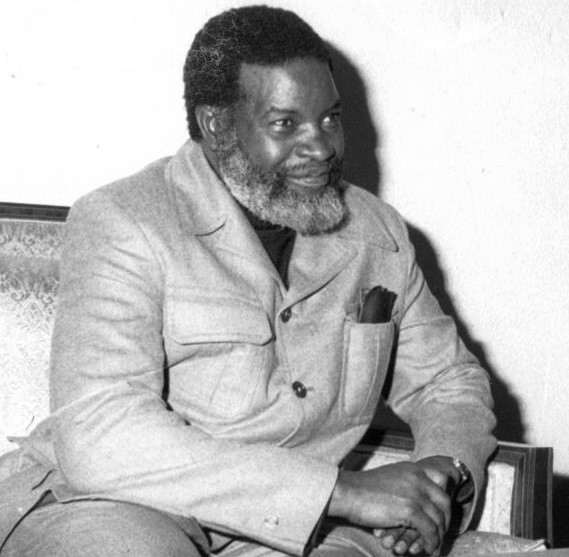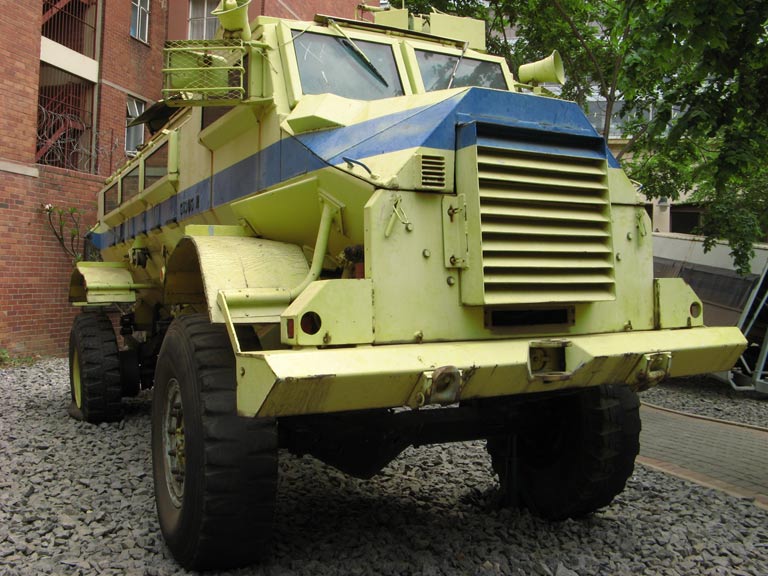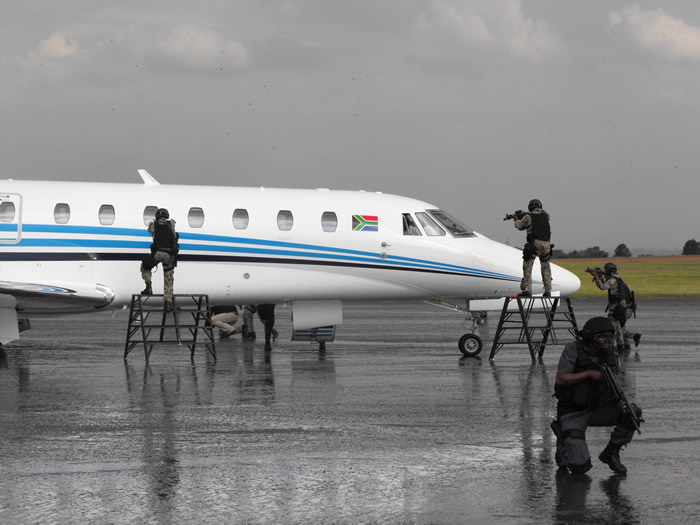|
Koevoet
Koevoet (, meaning ''crowbar'', also known as Operation K or SWAPOL-COIN) was the counterinsurgency branch of the South West African Police (SWAPOL). Its formations included white South African police officers, usually seconded from the South African Security Branch or Special Task Force, and black volunteers from Ovamboland. Koevoet was patterned after the Selous Scouts, a multiracial Rhodesian military unit which specialised in counter-insurgency operations. Its title was an allusion to the metaphor of "prying" insurgents from the civilian population. Koevoet was active during the South African Border War between 1979 and 1989, during which it carried out hundreds of search and destroy operations against the People's Liberation Army of Namibia (PLAN). Koevoet's methods were controversial, and the unit was accused of committing numerous atrocities against civilians. Over the course of the war, it killed or captured 3,225 insurgents and participated in 1,615 individual en ... [...More Info...] [...Related Items...] OR: [Wikipedia] [Google] [Baidu] |
Swapol Tracker
The South West African Police (SWAPOL) was the national police force of South West Africa (now Namibia), responsible for law enforcement and public safety in South West Africa when the territory was administered by South Africa. It was organised and structured both as a paramilitary force and as a civil police force. History SWAPOL was established following World War I, when the South African government assumed administration of South West Africa under the terms of a League of Nations mandate. Between 1915 and 1919, public security and law enforcement were entrusted to the South African military police. On December 31, 1939, the rule of law returned to South West Africa when SWAPOL was founded as the territory's first civilian law enforcement agency. An investigation department was established in 1920. SWAPOL was disbanded in 1939, and its local units absorbed into the South African Police (SAP). The SAP responsible for the territory from 1939 to 1981. Until 1981 it was a Provi ... [...More Info...] [...Related Items...] OR: [Wikipedia] [Google] [Baidu] |
South African Border War
The South African Border War, also known as the Namibian War of Independence, and sometimes denoted in South Africa as the Angolan Bush War, was a largely asymmetric conflict that occurred in Namibia (then South West Africa), Zambia, and Angola from 26 August 1966 to 21 March 1990. It was fought between the South African Defence Force (SADF) and the People's Liberation Army of Namibia (PLAN), an armed wing of the South West African People's Organisation (SWAPO). The South African Border War resulted in some of the largest battles on the African continent since World War II and was closely intertwined with the Angolan Civil War. Following several years of unsuccessful petitioning through the United Nations and the International Court of Justice for Namibian independence from South Africa, SWAPO formed the PLAN in 1962 with material assistance from the Soviet Union, China, and sympathetic African states such as Tanzania, Ghana, and Algeria. Fighting broke out between PLAN and ... [...More Info...] [...Related Items...] OR: [Wikipedia] [Google] [Baidu] |
Louis Pienaar
Louis Alexander Pienaar (23 June 1926 – 5 November 2012) was a South African lawyer and diplomat. He was the last white Administrator of South-West Africa, from 1985 through Namibian independence in 1990. Pienaar later served as a minister in F W de Klerk's government until 1993. He married Isabel Maud van Niekerk on 11 December 1954. Diplomat In the early 1980s, Louis Pienaar was assigned to Paris as South Africa's ambassador to France. Namibia On 1 July 1985, Pienaar was appointed by the National Party government to be Administrator-General (AG) of South-West Africa, a territory that the United Nations Security Council called Namibia and which UNSC Resolution 435 of 1978 declared was being administered illegally by South Africa. Two years after AG Pienaar's appointment, when prospects for Namibian independence seemed to be improving, UN Commissioner for Namibia (UNCN) Bernt Carlsson, was appointed. Upon South Africa's relinquishing control of Namibia, Commissioner Carlsso ... [...More Info...] [...Related Items...] OR: [Wikipedia] [Google] [Baidu] |
South African Police
The South African Police (SAP) was the national police force and law enforcement agency in South Africa from 1913 to 1994; it was the ''de facto'' police force in the territory of South West Africa (Namibia) from 1939 to 1981. After South Africa's transition to majority rule in 1994, the SAP was reorganised into the South African Police Service (SAPS). History The South African Police were the successors to the police forces of the Cape Colony, the Natal Colony, the Orange River Colony, and the Transvaal Colony in law enforcement in South Africa. Proclamation 18 formed the South African Police on 1 April 1913 with the amalgamation of the police forces of the four old colonies after the founding of the Union of South Africa in 1910. The first Commissioner of Police was Colonel Theo G Truter with 5,882 men under his command. The SAP originally policed cities and urban areas, while the South African Mounted Riflemen, a branch of the Union Defence Force, enforced the state' ... [...More Info...] [...Related Items...] OR: [Wikipedia] [Google] [Baidu] |
People's Liberation Army Of Namibia
The People's Liberation Army of Namibia (PLAN) was the military wing of the South West Africa People's Organisation (SWAPO). It fought against the South African Defence Force (SADF) and South West African Territorial Force (SWATF) during the South African Border War. Throughout its history, PLAN had both irregular insurgent and semi-conventional units, as well as an extensive recruitment network in rural South West Africa (Namibia). During the war most of its domestic activities consisted of mine warfare and acts of sabotage. PLAN initially lacked any standing units, and the bulk of operations were carried out by political exiles who spent cyclical periods residing in refugee camps in neighbouring states before launching raids inside South West Africa itself. By the end of the war, PLAN had 32,000 militants under arms, including three battalions of semi-conventional troops equipped with heavy weapons. PLAN launched its largest and final offensive between late April and early Marc ... [...More Info...] [...Related Items...] OR: [Wikipedia] [Google] [Baidu] |
Selous Scouts
The Selous Scouts was a special forces unit of the Rhodesian Army that operated during the Rhodesian Bush War from 1973 until the reconstitution of the country as Zimbabwe in 1980. It was mainly responsible for infiltrating the black majority population of Rhodesia and collecting intelligence on insurgents so that they could be attacked by regular elements of the security forces. The unit did this by forming small teams that posed as insurgents and usually included captured insurgents. Over time, the Selous Scouts increasingly attacked insurgents themselves and operated in the countries that neighboured Rhodesia. The unit developed a reputation for brutality, and was responsible for attacking and killing civilians. The Selous Scouts were also involved in the Rhodesian chemical and biological weapons program and used poisons and biological agents in some of its operations. The methods used by the unit led to the deaths of large numbers of insurgents but were counter-productive ... [...More Info...] [...Related Items...] OR: [Wikipedia] [Google] [Baidu] |
Special Task Force (SAPS)
The Special Task Force (STF) is the elite police tactical unit of the South African Police Service (SAPS). The Special Task Force handles high risk operations that fall beyond the scope of classic policing which require specialised skills. History In 1967, about 2,000 members of the South African Police were deployed to guard the northern border of Rhodesia (modern day Zimbabwe) to assist the Rhodesian security forces as guerrilla attacks became more frequent during the Rhodesian Bush War. These police members proved to be ill-equipped and ineffective at dealing with guerrilla warfare and terrorism. As a result of these events the Security Branch of the Police began to envision a special police unit to deal with high-risk situations such as hostage situations. Captain J.J. de Swardt of the Security Branch of the Police as well as Sergeant Roelf de Plooy (a counter insurgency (COIN) instructor), both veterans of the deployments in Rhodesia against Zimbabwe African National ... [...More Info...] [...Related Items...] OR: [Wikipedia] [Google] [Baidu] |
South Africa
South Africa, officially the Republic of South Africa (RSA), is the southernmost country in Africa. It is bounded to the south by of coastline that stretch along the South Atlantic and Indian Oceans; to the north by the neighbouring countries of Namibia, Botswana, and Zimbabwe; and to the east and northeast by Mozambique and Eswatini. It also completely enclaves the country Lesotho. It is the southernmost country on the mainland of the Old World, and the second-most populous country located entirely south of the equator, after Tanzania. South Africa is a biodiversity hotspot, with unique biomes, plant and animal life. With over 60 million people, the country is the world's 24th-most populous nation and covers an area of . South Africa has three capital cities, with the executive, judicial and legislative branches of government based in Pretoria, Bloemfontein, and Cape Town respectively. The largest city is Johannesburg. About 80% of the population are Black Sou ... [...More Info...] [...Related Items...] OR: [Wikipedia] [Google] [Baidu] |
League Of Nations Mandate
A League of Nations mandate was a legal status for certain territories transferred from the control of one country to another following World War I, or the legal instruments that contained the internationally agreed-upon terms for administering the territory on behalf of the League of Nations. These were of the nature of both a treaty and a constitution, which contained minority rights clauses that provided for the rights of petition and adjudication by the Permanent Court of International Justice. The mandate system was established under Article 22 of the Covenant of the League of Nations, entered into force on 28 June 1919. With the dissolution of the League of Nations after World War II, it was stipulated at the Yalta Conference that the remaining Mandates should be placed under the trusteeship of the United Nations, subject to future discussions and formal agreements. Most of the remaining mandates of the League of Nations (with the exception of South-West Af ... [...More Info...] [...Related Items...] OR: [Wikipedia] [Google] [Baidu] |
German Empire
The German Empire (), Herbert Tuttle wrote in September 1881 that the term "Reich" does not literally connote an empire as has been commonly assumed by English-speaking people. The term literally denotes an empire – particularly a hereditary empire led by an emperor, although has been used in German to denote the Roman Empire because it had a weak hereditary tradition. In the case of the German Empire, the official name was , which is properly translated as "German Empire" because the official position of head of state in the constitution of the German Empire was officially a " presidency" of a confederation of German states led by the King of Prussia who would assume "the title of German Emperor" as referring to the German people, but was not emperor of Germany as in an emperor of a state. –The German Empire" ''Harper's New Monthly Magazine''. vol. 63, issue 376, pp. 591–603; here p. 593. also referred to as Imperial Germany, the Second Reich, as well as simply Germa ... [...More Info...] [...Related Items...] OR: [Wikipedia] [Google] [Baidu] |



